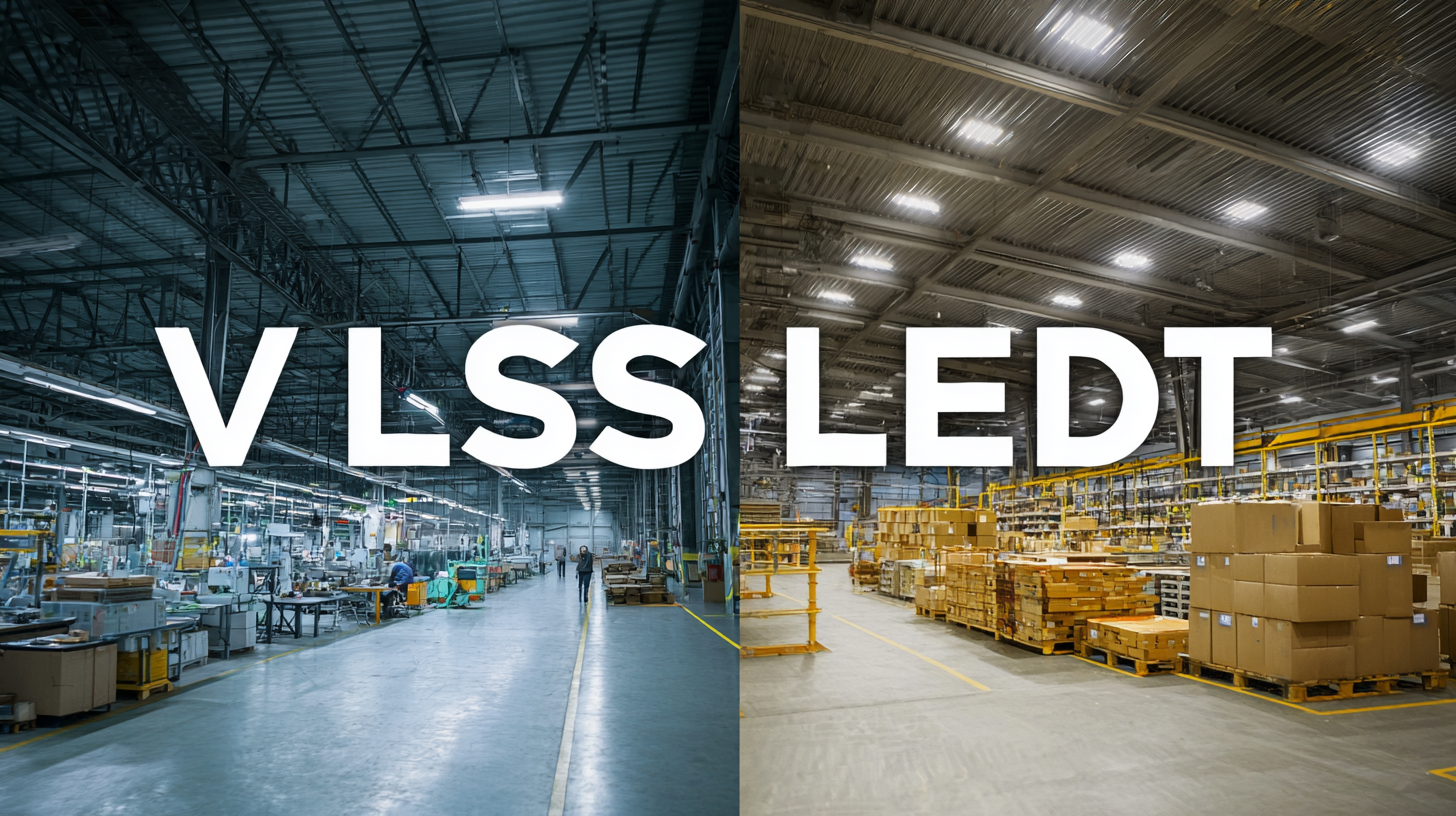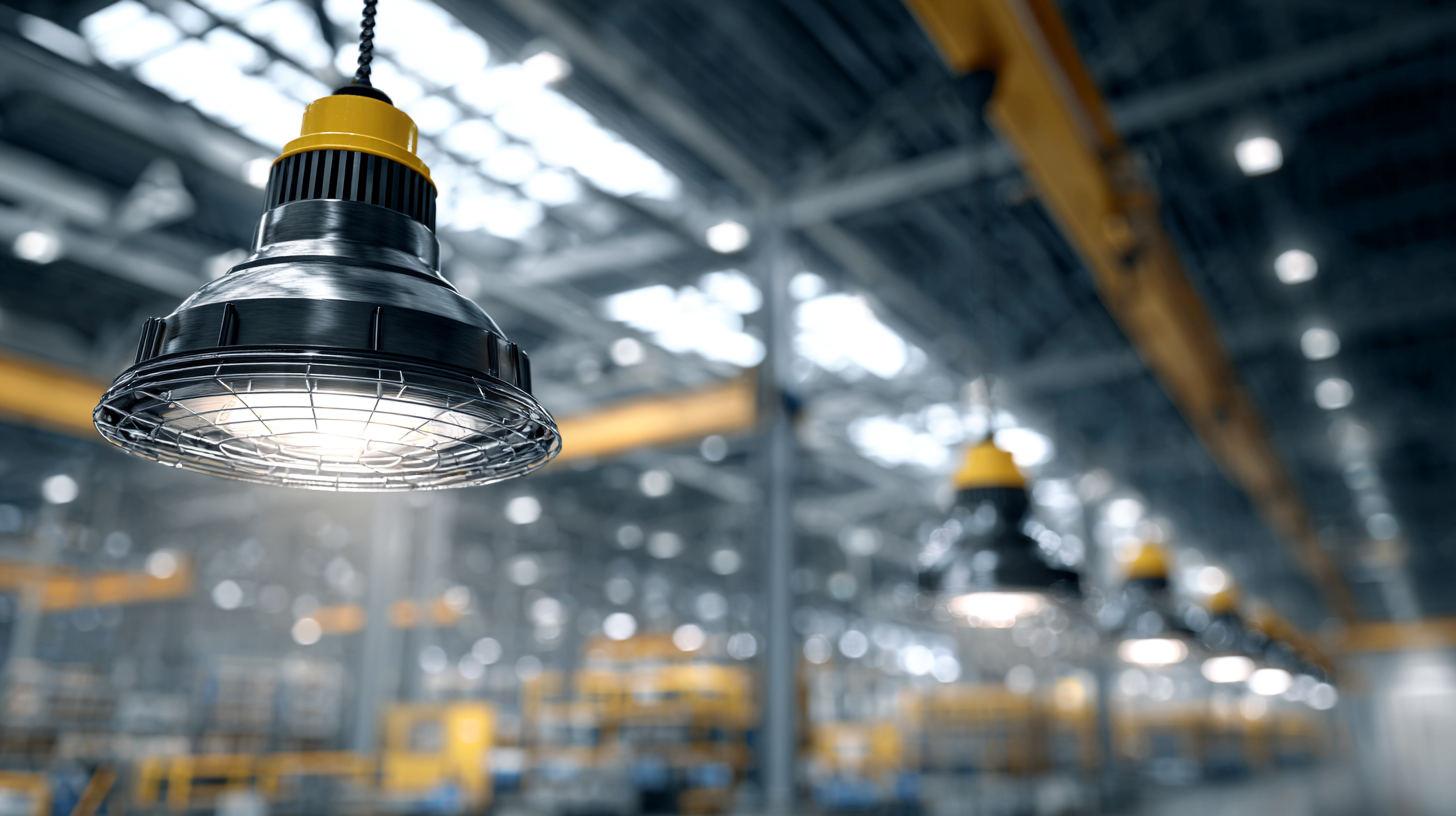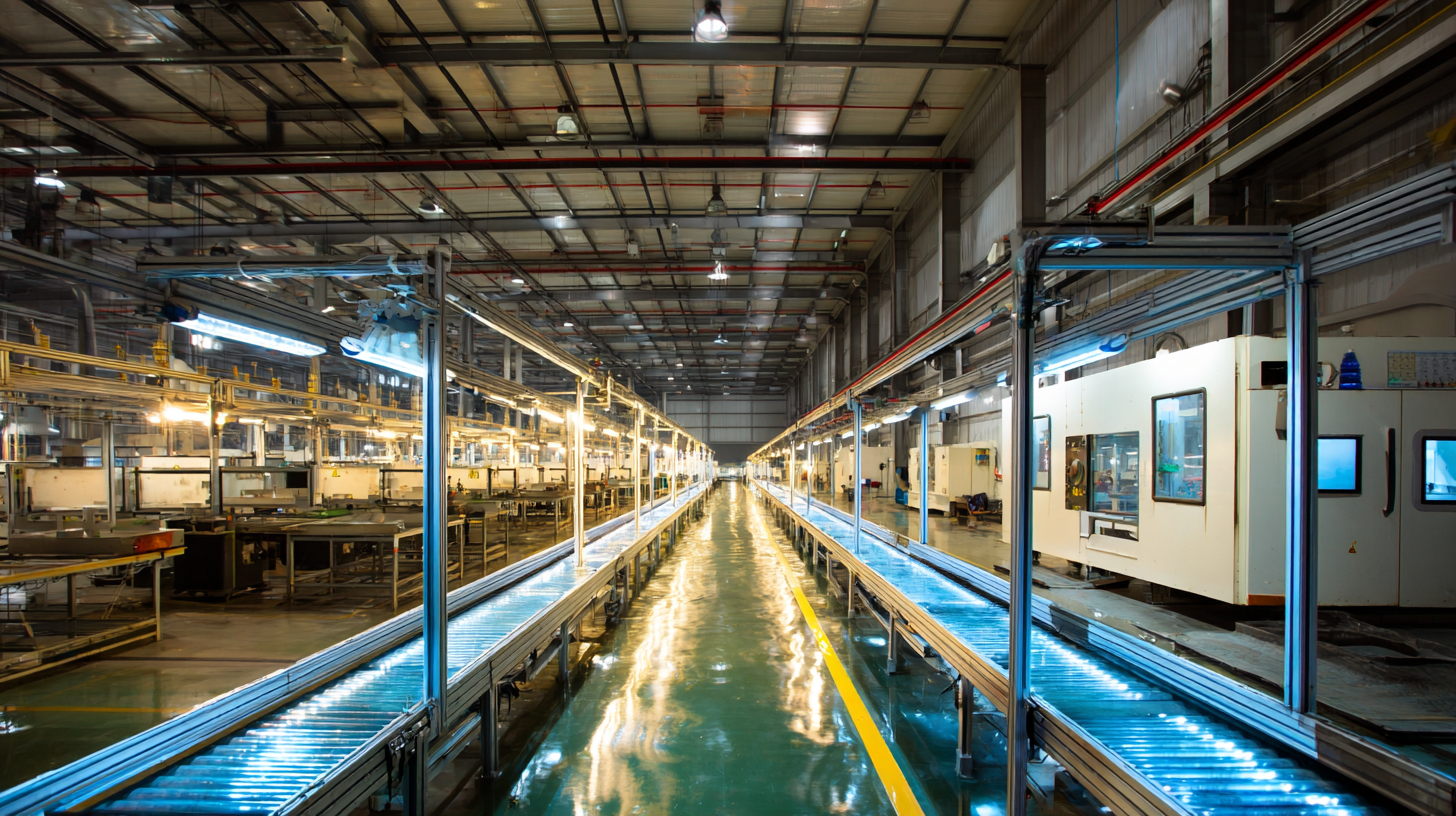
In today's manufacturing landscape, the significance of choosing the right Industrial LED Lighting cannot be overstated. With the global industrial LED lighting market projected to reach approximately $30 billion by 2025, driven by its energy efficiency and longevity, factories are increasingly turning to these advanced lighting solutions to meet their operational needs. Research indicates that implementing LED lighting can lead to energy savings of up to 75% compared to traditional lighting sources, while also enhancing workplace safety and productivity. As industries become more competitive, selecting high-quality LED lighting not only supports sustainable practices but also reduces maintenance costs and improves overall illumination quality. Whether upgrading existing systems or installing new fixtures, understanding the specific requirements of your facility is crucial for making an informed decision that aligns with technological advancements and regulatory standards.

In industrial settings, lighting is often overlooked, yet it plays a critical role in enhancing productivity and safety. According to a report by the Illuminating Engineering Society, optimal lighting can improve worker performance by up to 20%. Poor lighting conditions can lead to accidents and decreased efficiency; for example, a study published in the International Journal of Industrial Ergonomics found that inadequate illumination can lead to a 10% increase in error rates during complex tasks. Therefore, understanding the lighting needs of a factory is essential for maximizing operational effectiveness.
Moreover, the right industrial LED lighting can significantly reduce energy costs and improve sustainability. The U.S. Department of Energy indicates that LED lights consume up to 75% less energy than traditional incandescent bulbs and last 25 times longer. This longevity not only minimizes frequent replacements but also contributes to a lower carbon footprint. In addition, LEDs produce less heat, which can maintain a cooler work environment, ultimately benefiting employee comfort and productivity. Investing in quality LED lighting is not just an operational necessity but a strategic advantage for factories looking to enhance both performance and environmental responsibility.
| Lighting Type | Lumens per Watt | Color Temperature (K) | Lifespan (Hours) | Energy Efficiency Rating |
|---|---|---|---|---|
| High Bay LED | 130 | 5000 | 50000 | A+ |
| Flood LED | 120 | 4000 | 60000 | A++ |
| Linear LED | 100 | 3500 | 50000 | A |
| Panel LED | 110 | 5000 | 40000 | A+ |
When selecting the appropriate industrial LED lighting for your factory, it’s crucial to evaluate various types of lights based on key features and specifications. First, consider the lumen output. Different areas of your factory may require varying levels of brightness, so it's important to choose LED lights with the right lumen ratings for specific tasks. For instance, high bay lights may be ideal for large spaces with high ceilings, while task lights would be suitable for workstations that require focused illumination.
Another essential factor is the color temperature of the LED lighting. The temperature, measured in Kelvins (K), affects not only visibility but also worker comfort. Cooler temperatures (5000K–6500K) are often preferred in manufacturing environments to enhance alertness, while warmer temperatures (3000K–4000K) might be beneficial in areas requiring a more relaxed atmosphere.
**Tip:** Always consider the energy efficiency of the LED lighting. Look for fixtures with high Energy Star ratings, as they can lead to significant long-term savings on your energy bills while reducing your environmental footprint.
**Tip:** Don’t neglect the durability and lifespan of the lighting fixtures. Opt for industrial-grade LEDs that are rated for harsher environments, ensuring they can withstand vibrations, dust, and moisture commonly found in factories.
When comparing energy efficiency between LED lighting solutions and traditional lighting, it's evident that LED technology stands out as a superior choice for factories and industrial settings. LEDs consume significantly less power than incandescent or fluorescent bulbs, leading to substantial energy savings. Recent industry data illustrates that switching to LED lighting can reduce energy costs by up to 80%, which is crucial for companies looking to enhance their bottom line while also committing to sustainable practices.
Moreover, the longevity of LED lights further enhances their efficiency. Unlike traditional lighting that often requires frequent replacements, LEDs boast a lifespan of up to 25,000 hours or more. This durability minimizes waste and replacement costs, making them an environmentally friendly option. As businesses continue to evolve towards greener solutions, embracing LED technology not only makes economic sense but also aligns with the growing emphasis on reducing greenhouse gas emissions. Transitioning to energy-efficient lighting can play a pivotal role in a company's sustainability strategy in the fight against climate change.
This chart illustrates the energy consumption of different lighting types over a year, demonstrating the significant energy efficiency of LED lighting compared to traditional incandescent and compact fluorescent options.
When it comes to selecting the right industrial LED lighting for factory operations, assessing lifespan and maintenance costs is crucial for long-term efficiency. According to the Department of Energy, LED lighting can last up to 50,000 hours compared to only 2,000 hours for traditional incandescent bulbs. This extended lifespan significantly reduces the frequency of replacements, leading to lower labor costs and less downtime. Factories can see a reduction in maintenance expenses by up to 75% when switching to LED technology, as reported by the Lighting Research Center.
In addition, the initial investment in LED lights is often offset by their energy efficiency. A study by the Pacific Northwest National Laboratory reveals that LED lighting consumes 75% less energy than incandescent options, which not only contributes to a lower electricity bill but also supports sustainability efforts. The average payback period for switching to LED lighting in industrial environments is about 2-3 years, making it a sound financial decision in terms of operational costs over time. As factories strive for efficiency, understanding the long-term benefits of LED lighting, including lifespan and maintenance savings, is essential for making informed purchasing decisions.

When selecting industrial LED lighting solutions for your factory, understanding the industry-specific standards and regulations is crucial. Compliance with these regulations not only enhances safety but also ensures energy efficiency and sustainability. According to recent insights from an IMARC Group report, the setup costs for LED bulb manufacturing can significantly vary based on local regulatory frameworks, emphasizing the need to stay informed about compliance measures specific to your region.
**Tip 1:** Before purchasing LED lighting, research the industry-specific regulations that apply to your sector. This may include standards set by organizations such as the Department of Energy (DOE) or the Illuminating Engineering Society (IES).
Additionally, consider how market forces and climate-action policies are reshaping the industrial landscape. Innovative lighting solutions that align with sustainability goals can provide a competitive edge. As reported, barriers to entry in the LED market are decreasing, enabling more companies to adopt these technologies.
**Tip 2:** Evaluate suppliers based on their commitment to sustainability and regulatory compliance. Partnering with vendors who prioritize these elements can lead to better long-term solutions for your factory's lighting needs.

Let us help you get started with our superior LED lighting products.
Get all the latest news from BrightLED.
Copyright © Bright LED. All rights reserved.
STAY CONNECTED

